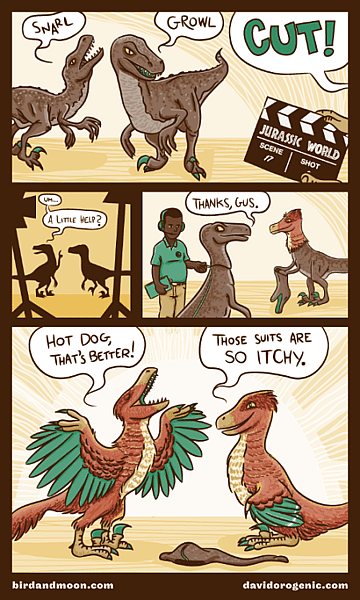
Birds are Dinosaurs, part 3!
Hello, it’s Katie again! Welcome to the final dinosaur blog – and my second to last blog post of the summer! This post is going to be all about synapomorphies, which is a fancy word for shared characteristics. When scientists are determining the relationships between living things, this is usually the starting point, and from the last blog, you already know the basics of who is related to who. So today, we will go a bit more in depth about the particular characteristics that set some dinosaurs closer or further apart from the birds!
Many of the dinos about to be mentioned are often called “transition phases,” meaning that while they have some bird characteristics, they still retain some non-avian dinosaur ones as well. Archaeopteryx is probably the most well known of these phases:
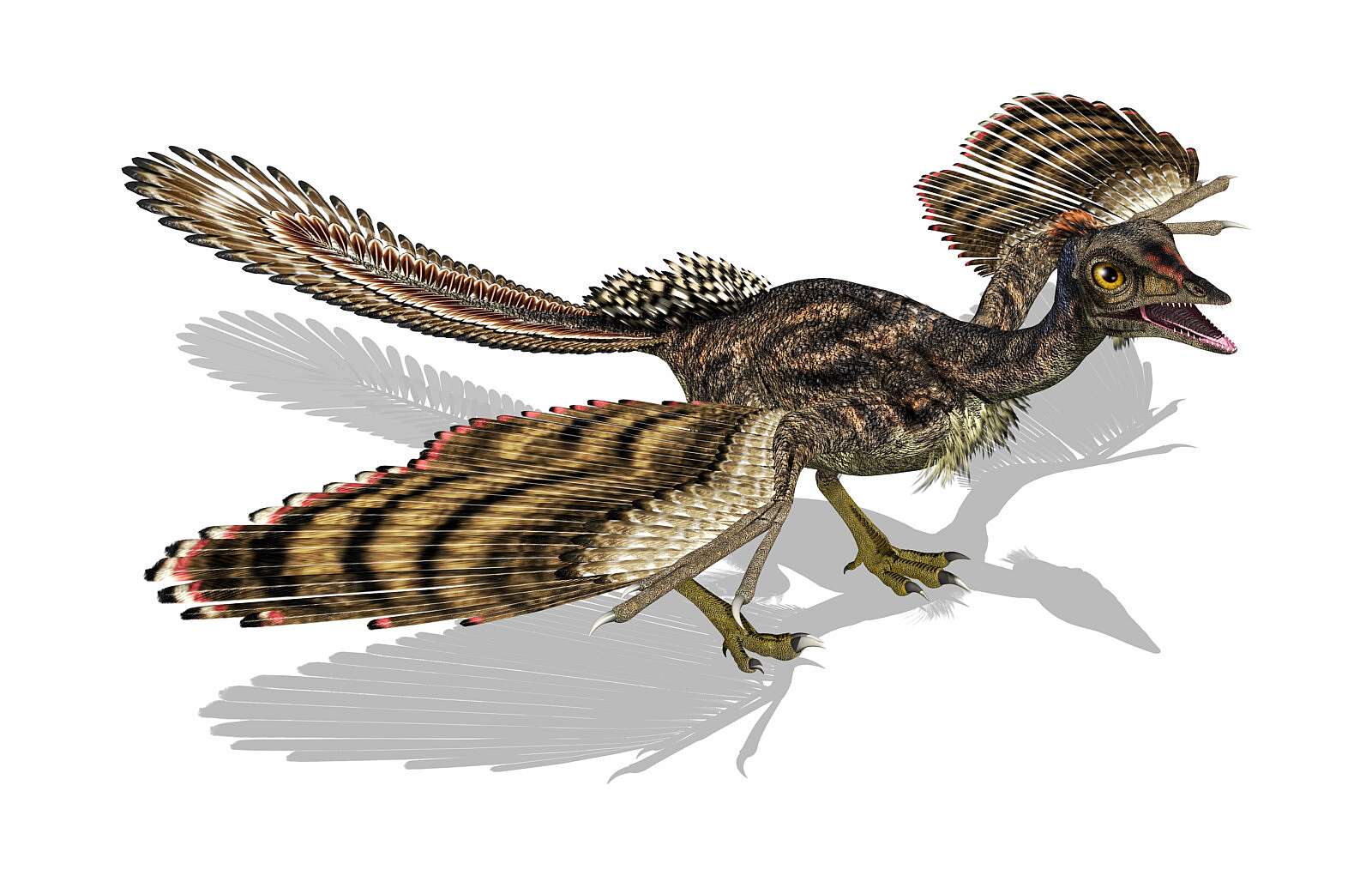
Archaeopteryx had jaws, a clawed hand, and a bony tail, but had feathers and a wishbone! Many of the theropods, those two-legged mostly carnivorous dinosaurs, have a mix of bird and dinosaur characteristics. Check out the cladogram below to review the groups of dinosaurs we’ve talked about!
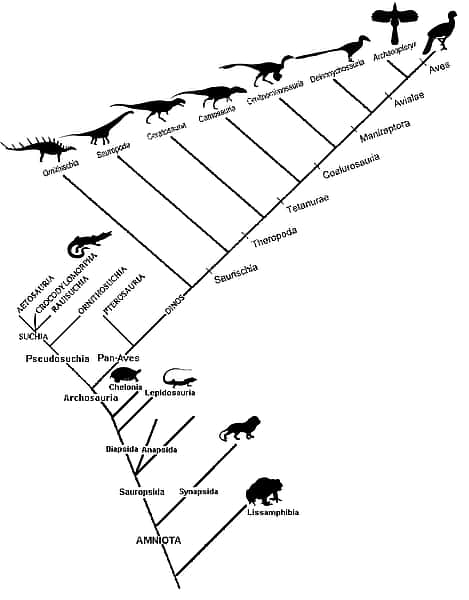
There are more than 20 synapomorphies between the theropods and birds, and today we are going to focus on 4: thin walled bones, bony tails, feathers, and the fusion and shrinking of arm bones, because all of these were among those traits that were extremely important in the development of flight in modern birds.
To be able to fly, animals have to be as lightweight as possible, and one of the major characteristics that allows modern birds to be able to fly are strong yet thin-walled bones. As far as we can tell through the fossil record, this trait goes all the way back to the theropods, way before flight!
Though they are thin, modern bird bones have an almost honeycomb-like structure inside to lend support – in fact, for their body size, birds actually have some of the strongest bones despite the thin structure! In the theropods, who didn’t have all the necessary characteristics for flight, the thin bones must have served another purpose, though we are not sure what. Regardless, it is one of those synapomorphies that none of the other dinosaurs we have found have, which is one of the lines of evidence we use to support the close relationship between theropods and birds!
Weight reduction, if you couldn’t tell, is a big deal for birds, and this includes reducing the number of bones. Everyone knows that T. rex,Deinonychus (the inspiration for Jurassic Park’s Velociraptor), and Archaeopteryx all had long tails that balanced out their bodies and probably helped them reach decent speeds. Modern birds also have tails, but there’s a big difference: their tails are made of feathers only – the last few spinal bones that used to be a tail are fused at the base of the spine into what’s called the pygostyle. Most of the transition species we have found so far have long, bony tails, but a few, like Confuciusornis, show various types of pygostyle shapes, probably because a long bony tail is great for running but not so great for flying!
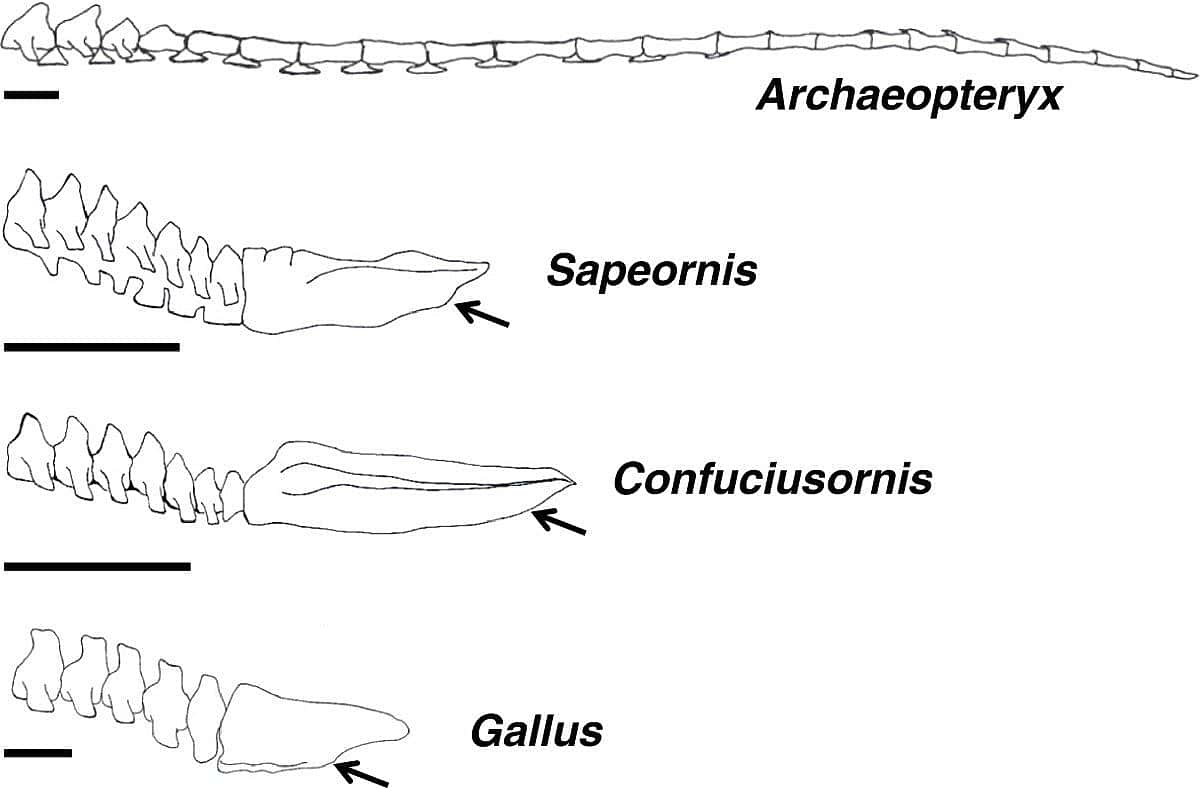
This next trait also has to do with reducing weight for flight: shrinking and fusing arm bones to become wings. Birds underwent huge changes in the positioning, size, and shape of their “arm bones” to get the wings they have today. To learn more and see helpful graphics, check out this article on how birds are living dinosaurs.
Interestingly, the bones in a bird’s wing do not go all the way to the tips of the wing like a bat’s! Through time, birds and their dinosaur relatives lost some of the bones in their arm and hand, and fused others. This makes for strong bones and good places for muscle attachment. Obviously, birds developed a different sort of flight than bats, and birds have diversified greatly to fill a bunch of different habitats and niches across the world; there are currently over 10,000 known species of birds! And what is one thing that all birds have in common that no other living animal has? Feathers! This leads us nicely to the last of our synapomorphies.
Finally, feathers are amazing – they come in all sorts of different colors, have several different forms, and are used in a few different ways. We often think of flight when we think of feathers, but they are also used for warmth, for display, and even wind and water protection. When we look at the fossil record, we see that many dinosaurs appear to have various forms of feathers, some more primitive than others. However, unlike many other synapomorphies, feathers alone cannot determine if a dinosaur is related to birds; in 2014, a dinosaur named Kulindadromeus zabaikalicus was discovered in Russia, and after examination, scientists found it had feathers. This may not seem like a big deal, except that this dinosaur is not a theropod; in fact, it appears to be more closely related to Stegosaurus! However, feathers are still really cool to discover on dinosaurs of all kinds, and really warps what we thought they looked like…
Jurassic Park (and its sequels) are incredible movies. To be fair, it is Hollywood, but they did get some things wrong: the major thing being that many dinosaurs had feathers, including their fearsome “velociraptor” (also not a real dinosaur, but based on the terrifying Deinonychus)! This may also be, in part, because at the time of the first movie, we didn’t yet know about the feathers! For a fun guide on Velociraptor vs Deinonychus check out the OnlyDinosaurs site here.
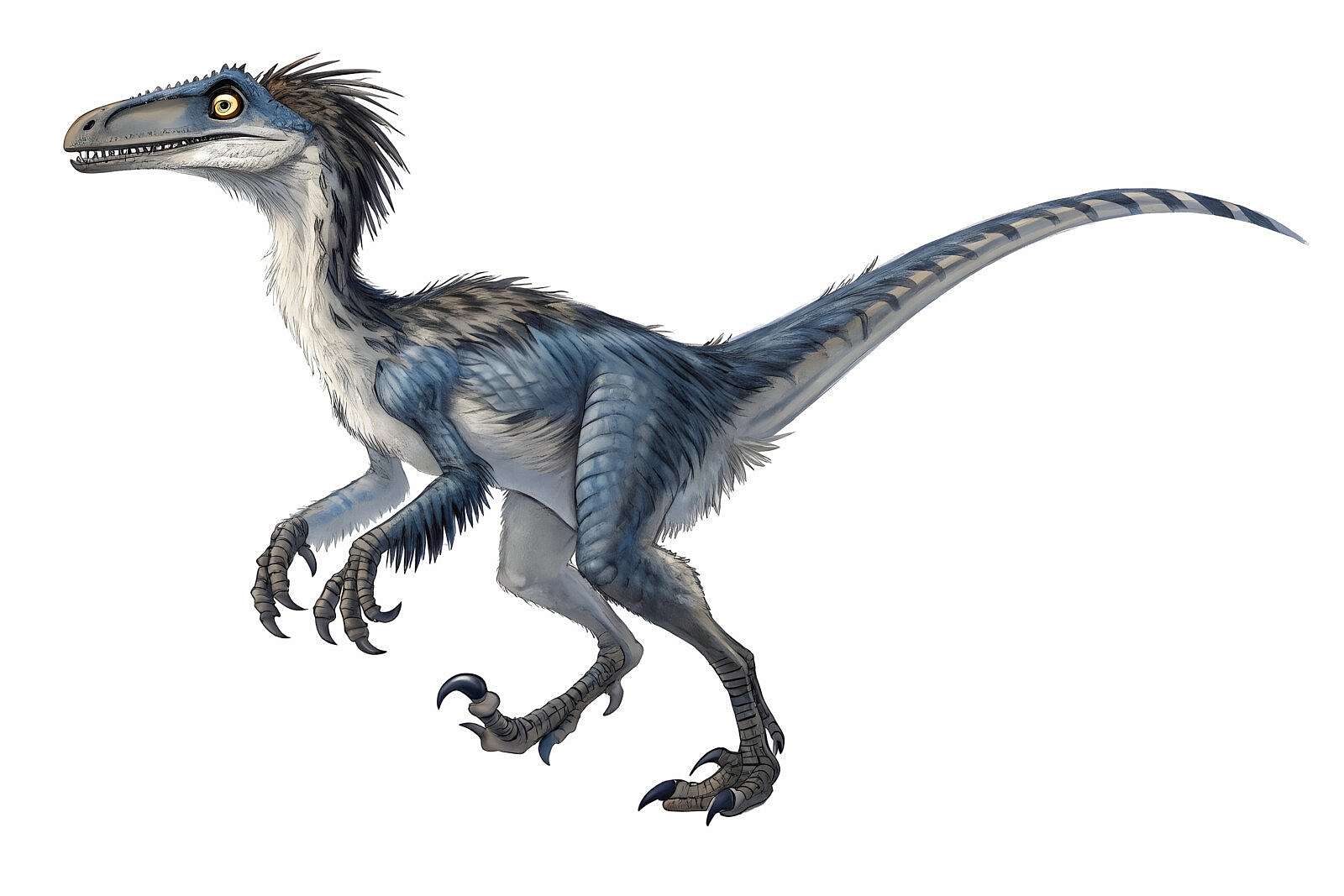
©Supaman/ Adobe Stock #1197557293
Other synapomorphies that were gained or lost over time include a shoulder joint that points upward, a half circle wrist joint to allow flight motion, the loss of heavy teeth, a wishbone, and so much more! It took a lot of work to get to the many and varied bird forms we have today.
One of the coolest things about the study of dinosaurs and birds is that scientists are making new discoveries all the time. This allows us to continue learning more about how the world used to be, and giving us insights into how things work today. Even when new things pop up that completely throw our idea of the world off kilter, it just makes things that much more interesting! Thanks again for reading my blogs, and I hope you enjoyed them! If you have any questions, leave it in the comments!
Thanks!
~Katie!
Attributions:
Cladogram of Dinosaurs – Kiwi Rex, Amélie PataudSilhouettes of non-avian dinosaurs by Slate Weasel, Paleocolour, Audrey.m.horn, and Dinoguy 2, CC BY-SA 4.0 https://creativecommons.org/licenses/by-sa/4.0, via Wikimedia Commons
Tail Comparison Diagram – Copyright © 2014 Rashid et al.; licensee BioMed Central Ltd. This is an Open Access article distributed under the terms of the Creative Commons Attribution License (http://creativecommons.org/licenses/by/4.0), which permits unrestricted use, distribution, and reproduction in any medium, provided the original work is properly credited.
Written By
Melissa Hill
While earning her Bachelor's Degree in Wildlife Management at the University of Wyoming, Melissa began volunteering at Laramie Raptor Refuge and was instantly hooked on birds of prey. Since those early days, she has worked with nearly 70 different raptors at four different raptor education groups in three states. She is a former member of the Education Committee for the International Association of Avian Trainers and Educators (IAATE) and a National Association for Interpretation's Certified Interpretive Guide. When she's not "playing with the birds" she enjoys spending time quilting, crocheting, and exploring the Greater Yellowstone Ecosystem with her non-bird family.
